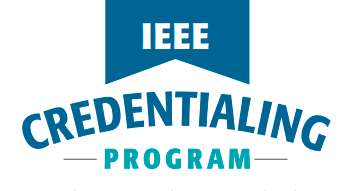What Not to do When Teaching: Part Two
Author: Elisa Sellars

In What Not to do When Teaching: Part One, we briefly covered the infractions of being late for class, being unprepared, and speaking in monotone or in a boring manner. Here are a few more “undesirables” to watch out for: Forget to follow through or ignore a student – No student likes his or her question ignored or forgotten. Whether you don’t see a hand raised or you forget to follow up on answering a complicated question that requires more time than you’re willing to give during the presentation, you end up looking bad.
One of my issues as a beginning teacher was tunnel vision. I sometimes did not see a hand raised or a deer-in-the-headlights expression on someone’s face because I was so focused on my agenda. To resolve this, I made myself pause several times in an hour to take a sip of water and scan the room, looking for those confused expressions and allowing time for students to speak up. Occasionally I would ask, “What questions or comments do you have about this or anything else we’ve covered?”
Some of our TTT graduates have shared their solutions for remembering to answer a student’s question at a later time. One graduate said he writes the question down somewhere obvious, either in his instructor’s notes or on a separate sheet of paper. Another graduate utilizes a section of a whiteboard to display questions. (He calls this the “Parking Lot”.) That way the questions are in front of him all day, not to mention in front of the students as well, making it less likely for him to forget about them. I’ve heard a couple of other instructors ask a student to email him the question right then and there. This suggestion may be useful if that particular inquiry needs more time to research in order to give a thorough response.
Not sticking to the script Sharing our work-related stories are good for both educational and entertainment purposes: driving a key point home, exemplifying how industry practices affect real life at work, or just providing some relief from the seriousness. While stories have their place and purpose, don’t fall into the trap of telling story after story while leaving out the “meat” of the presentation.
Remember your primary purpose: to fulfill a training requirement for the company. You are responsible for making sure students get the information they need by the end of the day. The most important things need to remain the most important things, like the OSHA and 70E standards, and the industry best practices. It is NOT a good idea to skip the videos in our presentations because of time constraints; the videos are included for a reason. So my best advice is to have stories and examples ready for use (and you will need them at some point), but do not make them the main attraction or allow them to take the place of the class material that’s already been provided for you.
Dismiss the class later than scheduled – As stated in Part I, employees may be on a strict time schedule at work, whether their company policy requires them to clock out by a certain time or they just need to get home. Don’t end on a bad note by dismissing late. To prevent this from happening, time yourself throughout the whole day.
Arrive early and start on time, make sure you pace your presentation, set reasonable time limits for your question & answer sessions, and keep the number of your stories to a minimum. During the preparation stage (which happens well in advance of the scheduled training day), you should decide what slides you want to have covered by mid-morning, at lunch break, and near the end of the day. The more often you teach the class, the better you will become at doing this.
Of course, there will be days when time seems to run away from you. Maybe you have talkative students, or you told too many stories at the beginning, and “all of a sudden” it’s a couple of hours before you’re supposed to dismiss – and you’re not as far along in the presentation as you need to be. What can you do to still dismiss on time? One option is to speak faster – not the best solution, but sometimes necessary. (Don’t let this practice become a habit, by the way.) Another tactic is to announce that students write down any remaining questions they have and try to meet with you about them after you’ve dismissed class for the day. Or they can email you those questions if the issue is something they don’t need an answer for immediately. Finally, don’t read every word on every slide; go over the main point of each slide and keep moving.
There is a lot to remember on your journey to becoming an exceptional trainer! If you ever become discouraged, remember that many others have gone before you and are with you even now on the same journey. If you have any questions, you can sign up on our forum and ask them in the TTT section under e-Hazard classes.
We look forward to hearing from you!
Do You Need Electrical Safety Training?
Join thousands of happy customers who have gone through our training.





